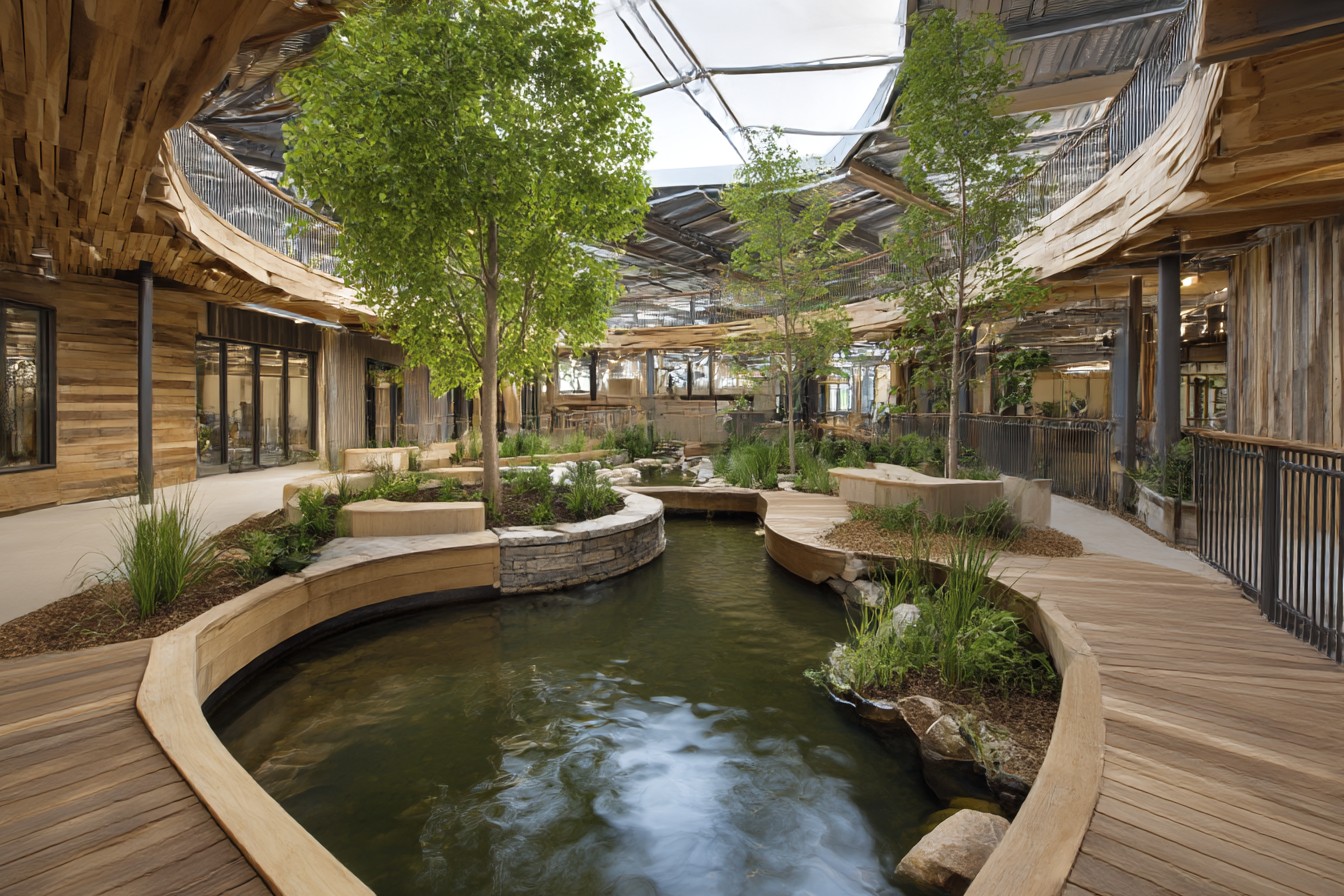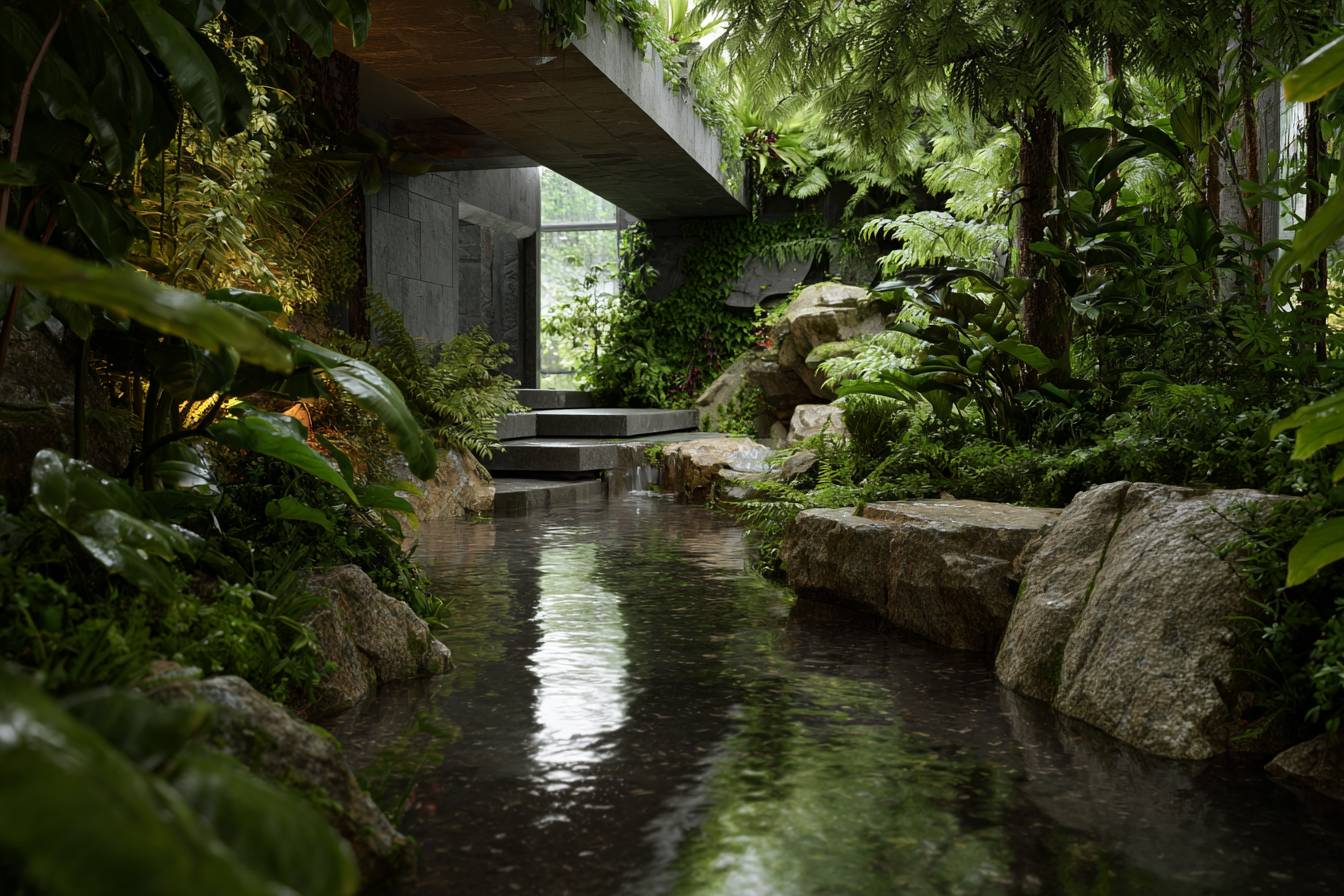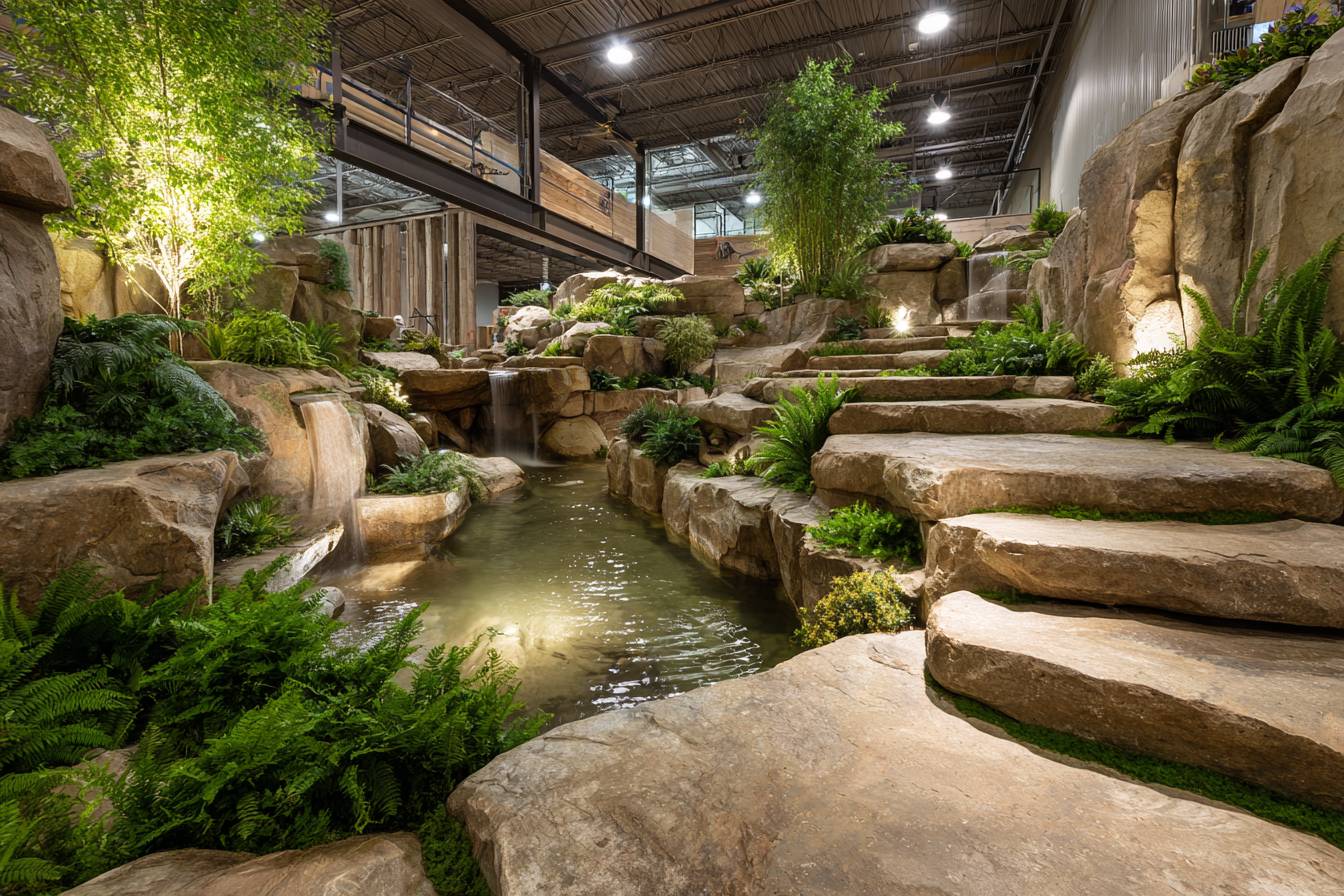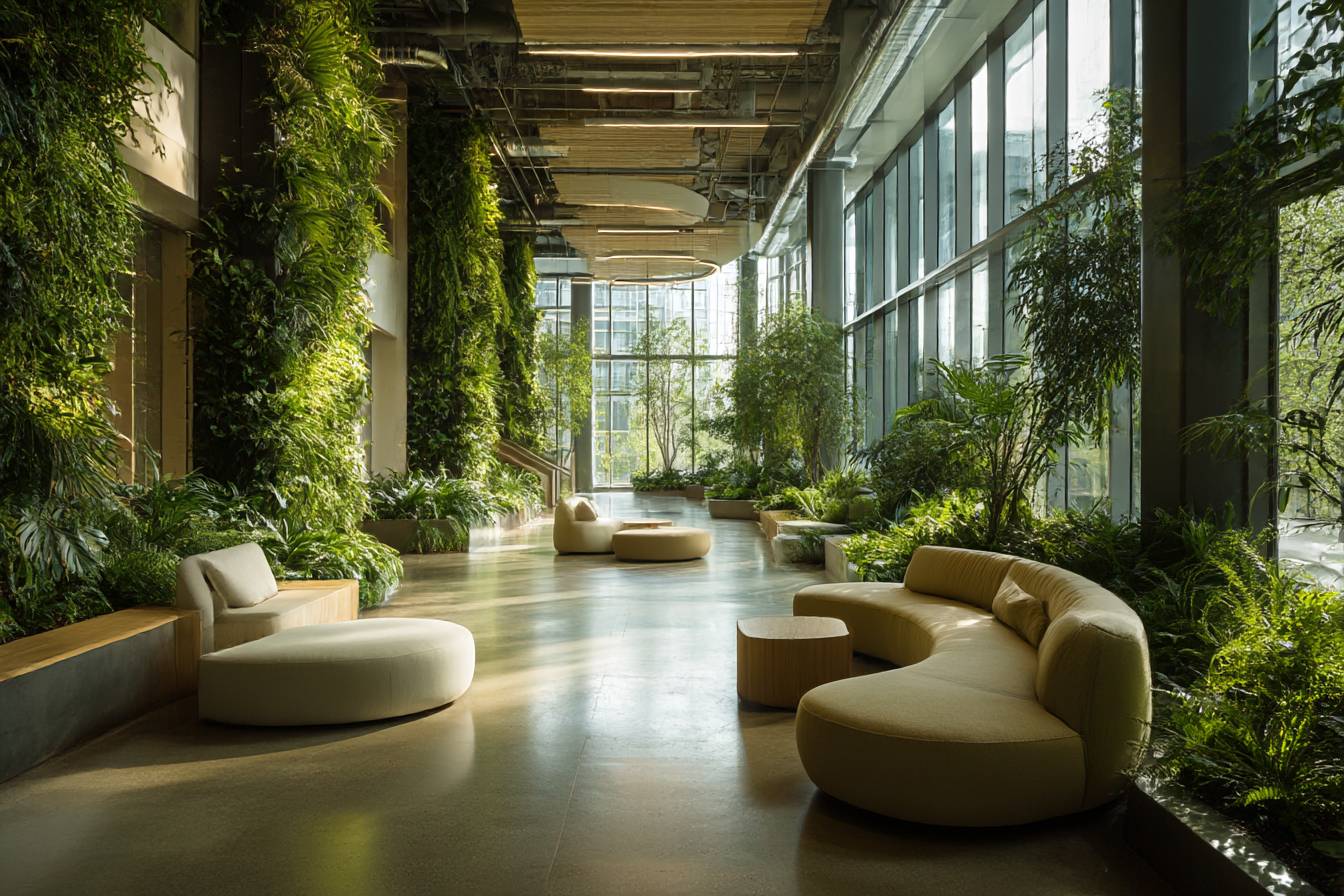A couple years ago, our youngest daughter asked if she could bring her eight-year-old son over for dinner more often. He’d been diagnosed with autism spectrum disorder the year before, and she was struggling with how to help him cope with different environments. “He gets so overwhelmed at our apartment,” she explained. “But he seems calmer here at your place.”
I started paying attention to what might be different about our house compared to theirs. We’d made so many modifications over the years for my wife’s mobility issues, and I’d been reading about how natural elements affect health and mood. Maybe some of those changes were helping our grandson too.
Their apartment was typical modern construction – fluorescent lights in the kitchen, vinyl flooring, synthetic carpeting, small windows. Everything efficient and easy to clean, but also pretty sterile. Our house, after decades of modifications and repairs, had ended up quite different. We’d replaced most of the fluorescent fixtures with regular incandescent bulbs years ago because they bothered my wife’s eyes. The hardwood floors we’d refinished ourselves. Lots of plants from my wife’s gardening hobby had migrated indoors over the winters.
I started researching connections between environment and autism, partly out of curiosity and partly because I wanted to help make our place even more comfortable for visits. What I learned surprised me. Turns out that many of the environmental factors that bother aging adults – harsh lighting, echoing spaces, chemical smells from synthetic materials – can be especially overwhelming for people on the autism spectrum.
The lighting issue was eye-opening, literally. Those fluorescent bulbs that flicker at a frequency most people can’t consciously detect? For someone with autism, it can feel like being in a strobe light. I’d already replaced most of ours because they triggered my wife’s headaches, but I hadn’t realized they might be affecting our grandson too.
I started experimenting with different approaches when he visited. Instead of the overhead lights, I’d use table lamps and the natural light from our enlarged windows. He definitely seemed less agitated. Started sitting still longer during meals, wasn’t constantly looking around the room like something was bothering him.
Materials make a bigger difference than I’d expected too. All that synthetic stuff in modern buildings – the vinyl, the laminate, the treated fabrics – they can off-gas chemicals that some people are much more sensitive to than others. We’d gradually replaced most of our synthetic materials over the years, partly for my wife’s allergies, partly because I just prefer working with natural materials when I’m doing repairs.
The acoustic difference is remarkable. Hard synthetic surfaces bounce sound around in ways that create chaos for sensitive ears. Our house has wood floors with area rugs, wooden furniture I’d refinished myself over the years, cotton curtains my wife made. Sounds much quieter and more peaceful, even with the same amount of activity.
I decided to create a special space in the house where our grandson could go if he felt overwhelmed during visits. Fixed up a corner of the sunroom with some of my wife’s plants, a comfortable wooden chair I’d built years ago, and a small water feature – just one of those tabletop fountains you can pick up at a garden center.
The difference was immediate. Instead of melting down when he got overstimulated, he started going to that corner on his own. He’d sit there for a few minutes, usually watching the water or touching the plant leaves, then come back to whatever we were doing. His mother was amazed.
This got me thinking about the outdoor spaces too. My wife’s accessible garden had always been designed for someone with limited mobility, but many of the same principles might help someone with sensory processing differences. Raised beds at comfortable heights, clear pathways, plants chosen for interesting textures and scents rather than just looks.
I started reading about something called sensory gardens specifically designed for people with autism. The idea is to create outdoor spaces with different zones – quiet areas for when you need to decompress, exploration areas with interesting plants and textures, more active spaces for movement. The transitions between zones should be clear but not jarring.
We had the space in our backyard, so I decided to modify my wife’s garden design. Added a quiet seating area surrounded by soft ornamental grasses that make gentle sounds in the wind. Created a little stream using a recirculating pump and some rocks I’d collected over the years – gives that consistent water sound that seems to help mask other environmental noise.
The exploration area has plants with different textures and scents – lamb’s ear that’s soft to touch, herbs that smell interesting when you brush against them, flowers that attract butterflies and birds. Nothing overwhelming, but enough sensory input to be engaging without being chaotic.
Our grandson loves helping with the garden when he visits now. He’s got his own tools and a section of raised bed where he can plant whatever he wants. The repetitive nature of garden tasks – watering, weeding, harvesting – seems to be calming for him. Plus he’s learning about how plants grow and where food comes from.
The indoor-outdoor connection matters too, especially during Michigan winters when getting outside regularly isn’t always practical. I’ve placed plants near the windows where he can see them from inside. Set up a small windowsill herb garden in the kitchen where he can check on seedlings even when it’s too cold to go out to the main garden.
What’s been interesting is how these changes have helped everyone in the family, not just our grandson. My wife enjoys the modifications because they make the spaces more comfortable for her too. I find I’m less stressed when the house feels calmer and more connected to the outdoors. Our daughter says she’s started making similar changes in their apartment.
This isn’t about turning your house into some kind of therapy center. It’s about recognizing that the environments we create can either support people’s comfort and wellbeing or work against them. For someone with autism, sensory sensitivities can make typical indoor environments genuinely overwhelming. But often the solutions that help them also improve the space for everyone else.
Simple changes can make a real difference. Maximizing natural light instead of relying on artificial lighting. Choosing natural materials when you’re replacing flooring or furniture anyway. Adding some plants to improve air quality and provide visual calm. Reducing synthetic fragrances and chemical cleaners that can be overwhelming for sensitive noses.
I’m not pretending to be an expert on autism or child development. I’m just a grandfather who’s learned through trial and error how to make his house more comfortable for a grandchild with different sensory needs. But the principles I’ve stumbled onto through practical experience match up with what researchers are finding about how natural environments can support people on the autism spectrum.
The key insight for me has been that this isn’t about creating “special” spaces for people with autism. It’s about creating more naturally comfortable environments that work better for human beings in general. The fluorescent lights, synthetic materials, and disconnection from nature that characterize so many modern buildings aren’t really good for anyone. They’re just especially problematic for people with heightened sensitivities.
If you’re dealing with similar challenges in your own family, my advice is to start small. Pay attention to which environments seem to work better and which ones cause problems. Make gradual changes – better lighting, natural materials when you’re replacing things anyway, some plants, connections to outdoor spaces.
You don’t need a big budget or professional expertise. You just need to think about creating spaces that support human comfort instead of fighting against it. Often that means bringing back some of the natural elements that buildings used to include before we got so focused on efficiency and maintenance that we forgot about how spaces actually feel to live in.
Robert is a retired engineer in Michigan who’s spent the past few years adapting his longtime home for accessibility and wellbeing. He writes about practical, DIY ways to make homes more comfortable and life-affirming as we age — from raised-bed gardens to better natural light.





